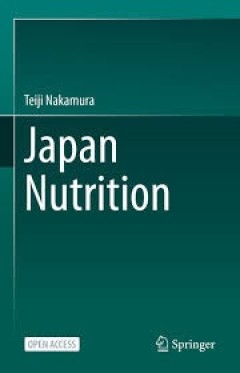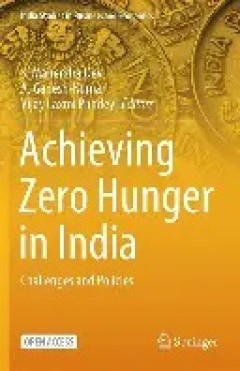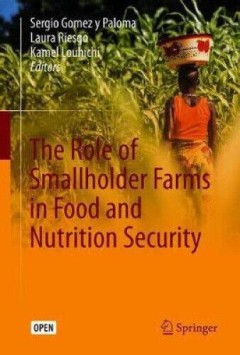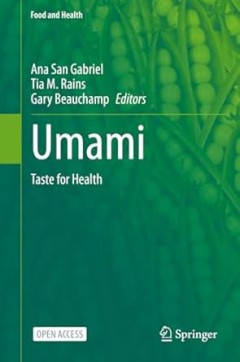Filter by

Japan Nutrition
- Edition
- -
- ISBN/ISSN
- 978-981-16-6316-1
- Collation
- -
- Series Title
- -
- Call Number
- -
- Edition
- -
- ISBN/ISSN
- 978-981-16-6316-1
- Collation
- -
- Series Title
- -
- Call Number
- -

Worldwide Perspectives on Geographical Indications = Crossed views between re…
Geographical Indications (GI) are distinctive signs that associate products of quality and reputation with their place or area of production and thereby help identify and distinguish such products on the market. In July 2022, the Food and Agriculture Organization of the United Nations (FAO) and the Centre de coopération internationale en recherche agronomique pour le dével oppement (CIRAD)…
- Edition
- -
- ISBN/ISSN
- 9783031716416
- Collation
- XXII, 394 hlm; ill., lamp.,
- Series Title
- -
- Call Number
- -

The Halal Industry in Asia = Perspectives from Brunei Darussalam, Malaysia, J…
- Edition
- -
- ISBN/ISSN
- 9789819603923
- Collation
- XXII, 420 hlm; ill., lamp.,
- Series Title
- -
- Call Number
- -
- Edition
- -
- ISBN/ISSN
- 9789819603923
- Collation
- XXII, 420 hlm; ill., lamp.,
- Series Title
- -
- Call Number
- -

Achieving Zero Hunger in India Challenges and Policies
This open access volume discloses rich set of findings and policy recommendations for India towards achieving the SDG 2.1 target of zero hunger by 2030. Through its fourteen chapters, it takes an integrated approach by examining diverse aspects of food and nutrition security through multidisciplinary lens of Agricultural Economics, Nutrition, Crop Sciences, Anthropology and Law, while being roo…
- Edition
- -
- ISBN/ISSN
- 978-981-99-4412-5
- Collation
- IX, 344
- Series Title
- -
- Call Number
- -

The Role of Smallholder Farms in Food and Nutrition Security
This open access book discusses the current role of smallholders in connection with food security and poverty reduction in developing countries. It addresses the opportunities they enjoy, and the constraints they face, by analysing the availability, access to and utilization of production factors. Due to the relevance of smallholder farms, enhancing their production capacities and economic and …
- Edition
- 1
- ISBN/ISSN
- 9783030421489
- Collation
- XI, 251 hlm; ill., lamp.,
- Series Title
- -
- Call Number
- -

The Potato Crop : Its Agricultural, Nutritional and Social Contribution to Hu…
This book is open access under a CC BY 4.0 license. This book provides a fresh, updated and science-based perspective on the current status and prospects of the diverse array of topics related to the potato, and was written by distinguished scientists with hands-on global experience in research aspects related to potato. The potato is the third most important global food crop in terms of cons…
- Edition
- 1
- ISBN/ISSN
- 9783030286835
- Collation
- XVII, 518 hlm; ill., lamp.,
- Series Title
- -
- Call Number
- -

Vaccines for Neglected Pathogens: Strategies, Achievements and Challenges
This book reviews successes and (remaining) challenges in vaccine development for the selected Neglected Tropical Diseases (NTD) of Leprosy, Leishmaniasis, Meliodoisis and Tuberculosis, which are a continuous burden for millions of people in affected areas worldwide. Written by frontline researchers, the volume deep-dives into different vaccine strategies, provides biotechnological background i…
- Edition
- 1
- ISBN/ISSN
- 978-3-031-24355-4
- Collation
- VI, 344
- Series Title
- -
- Call Number
- -

Technological Innovations in Tropical Livestock Development for Environmental…
This book contains the proceedings of the fourth International Conference on Tropical Animal Production for Food Security (ITAPS) exploring Technological Innovations in Tropical Livestock Development for Environmental Sustainability and Food Security. It discusses two interconnected issues: tropical livestock farming and environmental concerns, while addressing the adoption of innovative techn…
- Edition
- -
- ISBN/ISSN
- 9781003468943
- Collation
- -
- Series Title
- -
- Call Number
- -

Science and Innovations for Food Systems Transformation
This Open Access book compiles the findings of the Scientific Group of the United Nations Food Systems Summit 2021 and its research partners. The Scientific Group was an independent group of 28 food systems scientists from all over the world with a mandate from the Deputy Secretary-General of the United Nations. The chapters provide science- and research-based, state-of-the-art, solution-ori…
- Edition
- 1
- ISBN/ISSN
- -
- Collation
- -
- Series Title
- -
- Call Number
- XXII, 948

Umami
This Open Access book covers the concept of umami, the unique taste imparted by the amino acid glutamate, was first described in 1908 by Dr. Kikunae Ikeda of Tokyo University. Over the past century, hundreds of studies have explored the mechanistic underpinnings of the taste, leading to the characterization of the umami taste receptor in 2002. How this fifth basic taste figures into nutrition a…
- Edition
- -
- ISBN/ISSN
- 978-3-031-32691-2
- Collation
- XIII, 198
- Series Title
- -
- Call Number
- -
 Computer Science, Information & General Works
Computer Science, Information & General Works  Philosophy & Psychology
Philosophy & Psychology  Religion
Religion  Social Sciences
Social Sciences  Language
Language  Pure Science
Pure Science  Applied Sciences
Applied Sciences  Art & Recreation
Art & Recreation  Literature
Literature  History & Geography
History & Geography